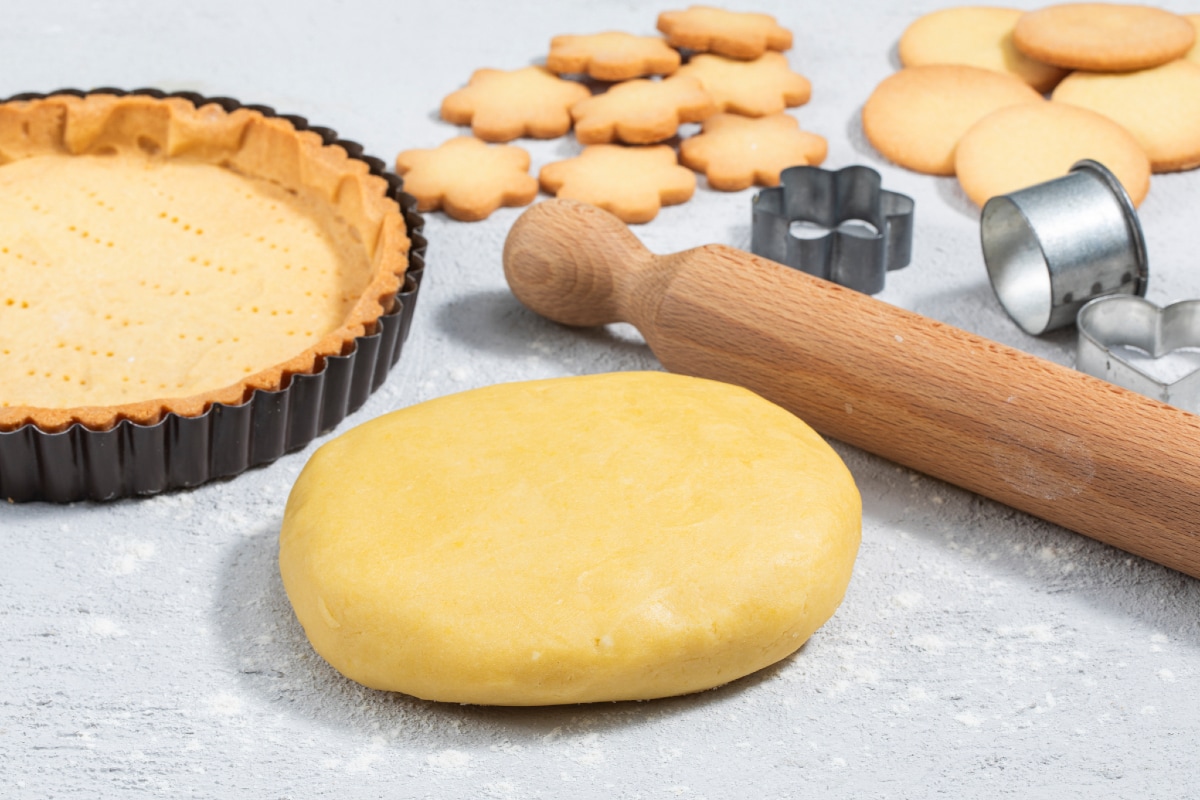Soft Shortcrust Pastry
- Easy
- 20 min


We reveal all the secrets to prepare a perfect shortcrust pastry, one of the foundations of pastry making with which you can create tarts, crumb cakes, or cookies in an impeccably delicious way! The recipe is simple but hides some pitfalls, and today we want to show you what to pay attention to in order to achieve a crumbly and not hard pastry. There are various versions of this preparation, such as eggless pastry or one made only with egg yolks, those with more or less butter... we have chosen a universal recipe that you can use to make many delicious treats! Same ingredients and two different methods to show you, the classic method and the "sanding" method, both to try to choose your favorite version. The classic method is more suitable for making tarts or tartlets, so "shells" that need to contain a filling, and requires the ingredients to be at room temperature. The sanding method is more suitable for rich butter doughs, such as cookies, and in this case, the ingredients must be cold from the refrigerator.
The essentials for preparing shortcrust pastry are easily available: eggs, butter, sugar, and flour... and of course our recipe to follow step by step to make an excellent homemade shortcrust pastry! You can prepare many buttery delights for all occasions, such as simple decorated cookies to serve at birthday parties or for original Christmas cookies, or even for Halloween!
Discover the other variations of shortcrust pastry that can be made:

To prepare shortcrust pastry with the classic method, you will need soft but still plastic butter, so leave it at room temperature long enough to reach the right consistency. At this point, start the preparation: cut the butter into cubes and place it in a bowl. Add the powdered sugar 1 and work the mixture with your hands 2 or with a whisk until you get a cream. Then add the eggs 3.

Mix well and do not worry if the mixture is not too homogeneous 4. At this point, add the flour all at once 5 and knead with your hands, preferably cold ones 6.

As soon as the flour is absorbed, transfer the mixture to a surface 7 and knead very quickly until it is homogeneous 8. It is important not to overwork the dough to avoid forming the gluten network, which is necessary for elastic doughs but not recommended for doughs that should be crumbly like shortcrust pastry. Another very important thing is not to heat the dough; since there is butter, you might have problems later in cooking.

Now you can form a dough ball and wrap it in plastic wrap. Alternatively, we recommend this method that will make rolling out the dough easier: place the dough in the center of a long enough sheet of parchment paper and then fold the ends towards the center to cover the dough well 10. Then use a rolling pin to roll it out to the desired thickness 11 12. You can store it like this in the refrigerator for at least an hour before using it. When you are ready to use it, you can roll it out further if necessary or cut it directly!

To prepare shortcrust pastry with the sanding method, the butter must be very cold. Pour the flour into a bowl 13, add the butter in cubes 14, and knead mainly with your fingertips 15.

You should obtain a crumbly mixture 16, hence the name "sanding." This technique makes the flour waterproof, so the gluten network does not develop during kneading. At this point, add the eggs 17 and knead again 18.

Finally, add the powdered sugar 19 and continue to knead first in the bowl 20 and then on the surface until you get a homogeneous dough 21. It is important not to overwork the dough to avoid forming the gluten network, which is necessary for elastic doughs but not recommended for doughs that should be crumbly like shortcrust pastry. Another very important thing is not to heat the dough; since there is butter, you might have problems later in cooking.

Now you can wrap it in plastic wrap. Alternatively, we recommend this method that will make rolling out the dough easier: place the dough in the center of a long enough sheet of parchment paper 22 and then fold the ends towards the center to cover the dough well 23. Then use a rolling pin to roll it out to the desired thickness 24. You can store it like this in the refrigerator for at least an hour before using it. When you are ready to use it, you can roll it out further if necessary or cut it directly!